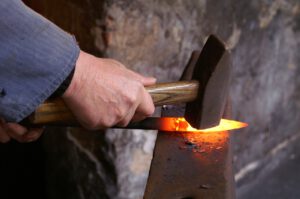
Today, the International Energy Agency (IEA) released its long-delayed Iron and Steel Technology Roadmap. While the report includes some encouraging insights and analysis about how to decarbonize the iron and steel industry, which accounts for 8 percent of all final global energy use and 7 percent of all global CO2 emissions, the report fails to deliver on the growing calls for more ambitious models built around a 1.5-degree climate scenario.
Q2 2020 hedge fund letters, conferences and more
Mighty Earth campaign director Margaret Hansbrough had the following response to the report and launch webinar:
The Decarbonization Of The Steel Industry
“The IEA has squandered its unique opportunity to set the stage for the decarbonization of steel, offering instead an unambitious plan that fails to ensure a livable Earth in 2050 and beyond. In its new report, the agency’s Sustainable Development Scenario (SDS) aims for a 1.8-degree scenario that is more likely to be 2 degrees. It projects a reduction of only 2 gigatons between now and 2030 – essentially a business-as-usual scenario – even as it states there will need to be a reduction of 22 gigatons for their 2050 SDS.
“This lack of ambition is incredibly disappointing because the private sector is showing signs of progress. In recent weeks, LaFarge, world’s largest cement company, issued a new science-based target (SBT) commitment. Arup, major construction company, announced plans for net-zero emissions by 2030. And the world’s largest steel company, ArcelorMittal just pledged to achieve carbon neutrality company-wide by 2050. As the difficult work of decarbonizing heavy industry moves forward, the IEA needs to lay out a vision sufficient to the scope of the challenge.
“Overall, the report fails to deliver in the most critical ways. The IEA would do the world a great service by elevating its Faster Innovation Case — a more aggressive scenario which it references in this report and articulates more fully in the September 2020 Energy Technology Perspectives report. We are calling upon the IEA, its member nations and associated nations, and policymakers and corporate leaders in those countries to put forth a 1.5-degree scenario for steel and all of heavy industry in the next few months. Our leaders must address the gap between their current scenarios and what is needed for a livable world and seize the opportunity to make industrial decarbonization an urgent part of a global green economic recovery.”
Analysis
A few encouraging points in the report include:
- Early retirement of assets, technology sunsets, and strong international cooperation around research, development, and deployment of breakthrough and clean technologies to displace and mitigate coal use are all mentioned in the report. These are all top priority tools to reduce emissions.
- The report calls for a global policy framework for countries and companies to come to a consensus through formal diplomatic climate and trade policy mechanisms
- The report acknowledges that in the time between now and when some of the biggest pollution reduction strategies will pay off at great scale, the steel industry should invest in Nature Based Solutions such as forest conservation and restoration to complement industry decarbonization and achieve carbon neutrality now. This recommendation aligns with Mighty Earth’s call to action for the global steel industry to commit to achieving carbon neutrality now and net zero by 2050.
The most discouraging points in the report include:
- Despite IEA’s enthusiasm of late for clean hydrogen technology, it forecasts that by 2050 only 8 percent of steel will be produced using clean hydrogen.
- Almost nothing is mentioned about the current need to address overcapacity, mostly driven by China’s aggressive, high-carbon plans for a post-COVID recovery. This silence is in strong contrast to the OECD Steel Committee, which raised overcapacity as a major concern last week.
- Overall, the report shows deeply path dependent and siloed thinking from the IEA. They fail to recognize that the very countries and regions where they project dramatic increases in steel demand are the same places that will be most severely affected by the dangerous effects of climate change, including rising seas, catastrophic temperature rise, and drought.
About Mighty Earth
Mighty Earth is a global campaign organization that works to protect the environment. We focus on big issues: conserving threatened landscapes like tropical rainforests, protecting oceans, and solving climate change. In the fall of 2018, Mighty Earth launched a global campaign calling on Nucor and other global steel leaders to commit to clean energy and carbon neutrality. The campaign released two groundbreaking reports: Cold Steel, Hot Climate and Construction Destruction. Both reports focused on advances the steel and construction industries must undertake right away to solve the climate crisis and specifically outlined ways for Nucor to lead the market in low carbon steel making by committing to clean electricity. For full reports and statements visit: www.mightyearth.org/steel.
The post IEA Fails to Deliver A 1.5-Degree Climate Scenario For Steel Industry appeared first on ValueWalk.
